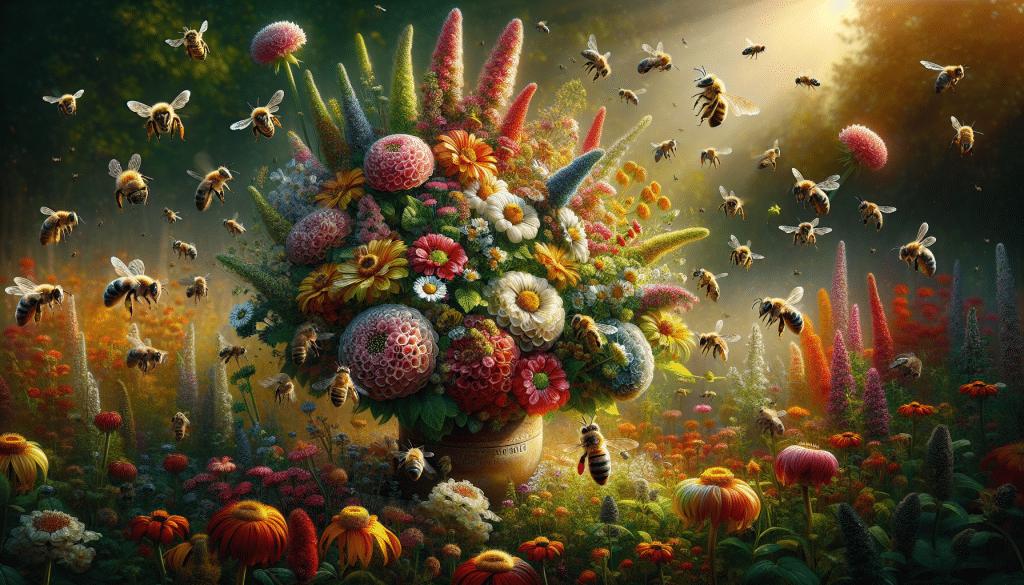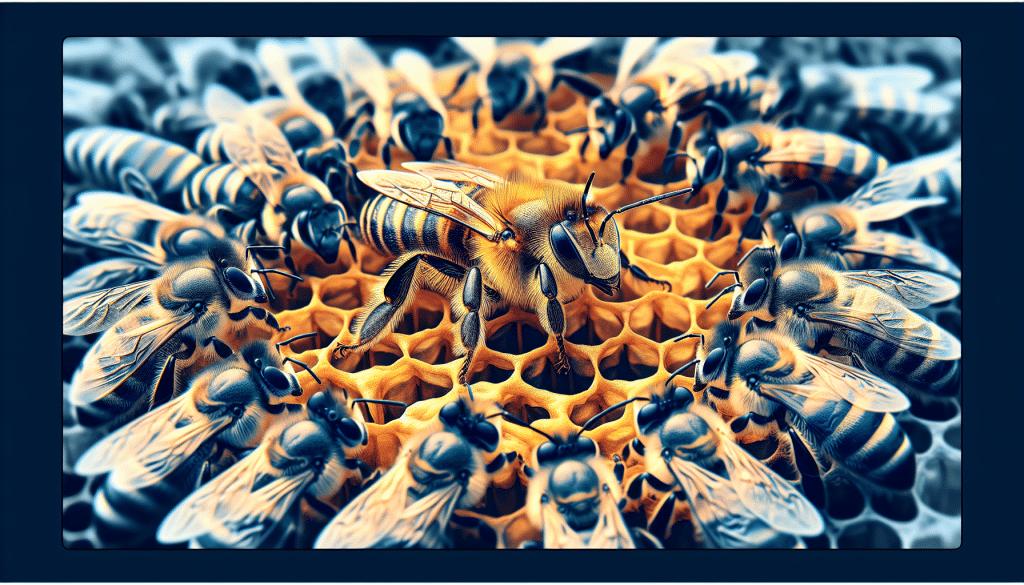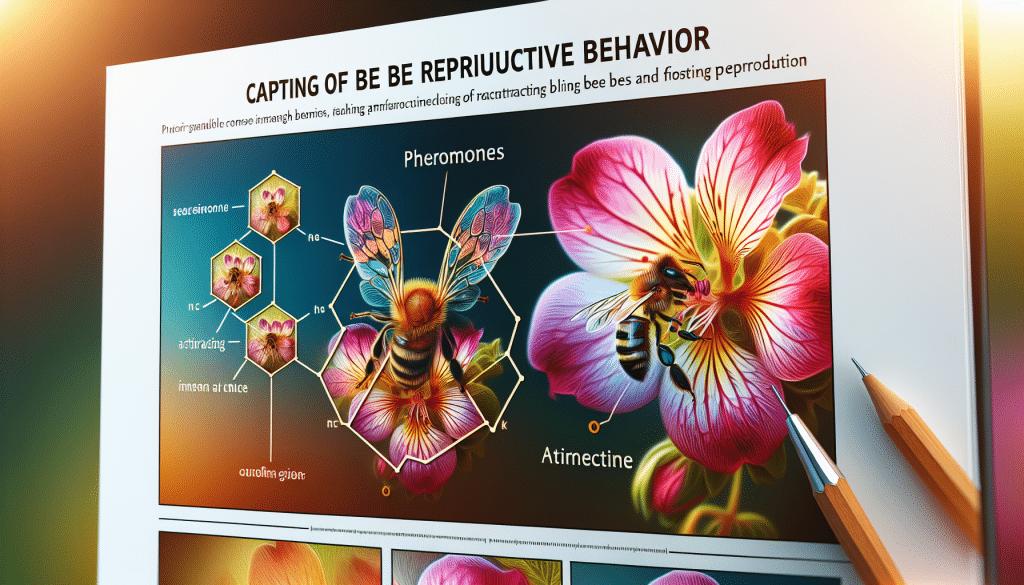Imagine having a beautiful garden filled with buzzing bees that help your flowers and vegetables grow! In this ultimate guide, you will learn all the tricks to attract these incredible creatures to your garden. Get ready to discover the secret to bringing bees to your garden and enjoy the wonderful benefits they bring. Exciting adventures await as you embark on this journey to create a buzzing paradise right in your own backyard!

Understanding The Importance of Bees in Your Garden
Bees play a crucial role in pollinating plants, which is how they help flowers grow and produce fruits and vegetables. When bees land on flowers to collect nectar, pollen sticks to their bodies and gets transferred to other flowers they visit. This process is called pollination, and it helps plants reproduce. Without bees, many plants would not be able to make seeds or fruit. That means fewer flowers, less food for animals, and fewer fresh fruits and vegetables for us to eat!
Not only do bees help our gardens grow, but they also contribute to a healthy ecosystem. Bees are not the only creatures that rely on nectar and pollen from flowers. Birds and butterflies also need flowers for food, and many animals depend on the seeds and fruits that come from pollinated plants. If we didn’t have bees, it would disrupt the balance of nature and harm many other species.
Unfortunately, bees are facing a big threat to their population. Pesticides, loss of habitat, and climate change are some of the reasons why bee numbers are declining. This is a serious problem because we need bees to keep our gardens and the environment thriving. If we don’t take action to protect bees, we could lose the beautiful flowers in our gardens and face difficulty growing the food we love.
Types of Bees You Can Attract to Your Garden
There are different types of bees, but some of the most common ones you can attract to your garden are honey bees, bumble bees, and solitary bees. Honey bees live in hives and are famous for making delicious honey. They are great pollinators and can visit many flowers in a single trip. Bumble bees are large and fuzzy, and they are also excellent pollinators. Solitary bees, like mason bees and leafcutter bees, live on their own and don’t form colonies. They are important pollinators too!
Each type of bee has its own preferences and behaviors. For example, honey bees and bumble bees like to visit flowers that are brightly colored and have a lot of nectar. They are attracted to flowers like daisies, sunflowers, and lavender. On the other hand, solitary bees, like mason bees and leafcutter bees, are not very picky. They are happy to visit many different types of flowers, as long as they can find pollen and nectar.
Carpenter bees are another type of bee that you might see in your garden. They are known for their ability to burrow into wood to make their nests. While they are not as effective at pollinating as honey bees or bumble bees, they still play a role in our ecosystem.

Creating a Bee Friendly Environment
If you want to attract bees to your garden, it’s important to create a safe environment for them. That means avoiding harmful pesticides and chemicals that can harm bees. Instead, you can use natural methods to control pests in your garden, like introducing beneficial insects or using organic pest control sprays.
Bees also need a place to call home in your garden. You can create a bee habitat by making sure there is enough space with flowers for the bees to forage. It’s helpful to have a variety of flowers that bloom at different times throughout the year, so there is always a food source for the bees. Additionally, you can provide natural shelters like old tree trunks or bee houses, where bees can rest and nest.
Choosing The Right Flowers and Plants
To attract bees, it’s important to choose the right flowers and plants for your garden. Bees are especially fond of flowers that are brightly colored, like yellow, blue, and purple. They can see these colors well and are naturally drawn to them. Planting a variety of flowering plants that bloom at different times of the year will ensure a continuous food source for the bees.
It’s also important to avoid hybrid flowers. Hybrid flowers may look beautiful, but they often have been bred to have large petals and showy features, which can make it difficult for bees to access the pollen and nectar. Instead, choose native flowers or heirloom varieties that have not been modified. These flowers are often more suited to the needs of bees and provide them with a better food source.

Offering Bee-Friendly Water Sources
Just like every living thing, bees need water to survive. You can help them by providing a safe water source in your garden. Bees are small, so they need shallow pools of water, like a birdbath or a shallow dish filled with water. It’s important to keep the water clean and fresh by changing it regularly, so it doesn’t become a breeding ground for mosquitoes. You can also add rocks or twigs to the water source to give the bees a place to rest while they drink.
Installing Bee Hotels or Bee Houses
You can take your support for bees to the next level by creating a cozy place for them to nest. Bee hotels or bee houses are like tiny homes for bees. They consist of small tubes or holes where bees can lay their eggs and raise their young. You can make a DIY bee house using materials like wood and bamboo. It’s important to place the bee house in a sunny spot in your garden and make sure it is protected from rain and strong winds. Installing multiple bee houses will attract different types of bees.
The Attraction of Native Plants
Native plants are plants that naturally occur in your region. They are well-suited to the local environment and are great for attracting bees. Native plants provide the bees with the pollen and nectar they need and are often more resistant to local pests and diseases. By incorporating native plants into your garden layout, you’ll not only create a beautiful and bee-friendly space but also help support the local ecosystem.
Maintaining Your Bee-Friendly Garden
Once you have created a bee-friendly garden, it’s important to take care of it to ensure the bees thrive. Regularly check the bee houses and clean them if necessary. Bees depend on flowering plants for food, so it’s important to maintain the health of your plants by watering them, removing weeds, and providing organic fertilizer if needed. When it comes to interacting with bees, it’s best to observe them from a safe distance and avoid swatting or hurting them. Bees are usually not interested in stinging unless they feel threatened, so if you remain calm and respectful, they will go about their important work.
Helping Bees During Tough Season
Bees face challenges during certain seasons, especially early spring and late fall when flowers may be scarce. To help them during these tough times, you can provide food sources like flowering plants that bloom early or late in the season. These plants will ensure that the bees have access to nectar and pollen when other sources are limited. Additionally, it’s important to create a winter-safe garden for bees. Leaving some areas of your garden untrimmed during the winter will provide shelter and nesting spots for bees and other beneficial insects.
Creating a Community Advocate for Bees
You can go beyond your own garden to help protect bees by spreading awareness and advocating for their importance. Educate your family, friends, and neighbors about the importance of bees in our ecosystem and the steps they can take to support them. You can also start local initiatives, like organizing a bee-friendly garden tour or collaborating with schools or community centers to plant bee-friendly areas. By making your town more bee-friendly, you’ll create a positive impact on the bee population and encourage others to do the same.
Remember, bees are not just buzzing insects that can be scary. They are amazing creatures that play a crucial role in our daily lives. By creating a bee-friendly garden and taking steps to protect bees, you are helping to ensure a healthy and vibrant environment for both bees and humans. So let’s all do our part to welcome these little pollinators into our gardens and keep them buzzing happily!



